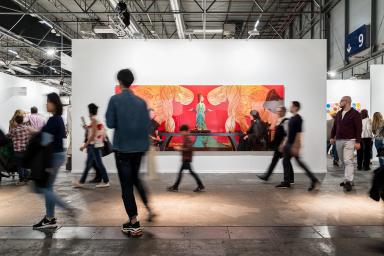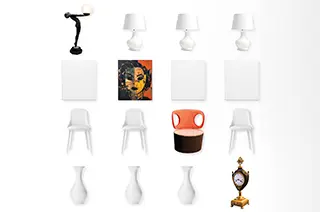Art and antiques fairs
The art and culture sector encompasses the group of individual agents and institutions dedicated to the commercial exploitation of art. As a market, it sets prices for artistic products or works of art. The antiques sector includes groups of collectors, antique dealers and decorators interested in historical items such as furniture, jewellery and other objects from the 20th century and earlier.

4Events found

What is exhibited
A wide variety of artistic works can be found at IFEMA MADRID art fairs, ranging from paintings and sculptures to photographs, prints and digital art. These fairs are usually attended by both national and international art galleries, exhibiting works by emerging and established artists. Visitors have the opportunity to view and purchase pieces of different styles and periods, from contemporary art to classical works.
In addition, some fairs include sections dedicated to urban art, design and new technologies, thus offering a complete and diverse experience for art lovers. These fairs are dynamic spaces that foster cultural dialogue and contribute to the development of the art market in an inspiring and stimulating environment.
Art at IFEMA MADRID
IFEMA MADRID's art fairs, such as ARCO Madrid, ARCO Lisboa, Feriarte and Estampa, are prominent events on the cultural calendar both nationally and internationally. ARCO Madrid is one of the most important contemporary art fairs in the world, attracting galleries and artists of global renown and providing a platform for artistic and cultural exchange.
ARCO Lisbon, an extension of ARCO Madrid, has also become a benchmark in the European art scene, promoting dialogue between artists, gallery owners and collectors. Feriarte, on the other hand, focuses on antique art, furniture and collector's items, offering a more traditional vision of art. Estampa, on the other hand, focuses on contemporary art in graphic art format, providing a space for experimentation and innovation in this field. All these fairs contribute to the dynamism and diversity of the art market, offering unique opportunities for the appreciation and acquisition of works of art from different styles and periods.
Visitor profile
Visitors to art fairs at IFEMA MADRID tend to be a diverse mix of art sector professionals, collectors, art lovers, students and the general public interested in the art world. Art professionals, such as gallerists, artists, curators and critics, attend these fairs in search of business opportunities, collaborations and networking. Collectors, both private and institutional, come in search of new acquisitions and to keep abreast of the latest trends and emerging artists.
In addition, the general public visits these fairs to enjoy the exhibitions, discover new works and artists, and participate in cultural events and educational activities organised during the event. In short, the visitor profile is varied and reflects the broad interest and diversity of the art world.
Art Sector in Spain
The art sector in Spain is remarkably dynamic and diverse, with a rich history and a vibrant contemporary scene. Spain has been an important cultural centre for centuries, with a significant influence on the development of art worldwide. Today, the country is home to a wide range of art institutions, from internationally renowned museums to independent art galleries and alternative cultural spaces.
Madrid and Barcelona stand out as Spain's main artistic centres, with a high concentration of art galleries, museums and cultural events. The art scene in Spain is particularly vibrant, with an active artistic community and diverse artistic expressions ranging from painting and sculpture to digital and performance art.
In addition to the main cities, other regions of Spain, such as Valencia, Bilbao and Seville, also have a remarkable art scene, attracting both local and international artists.












